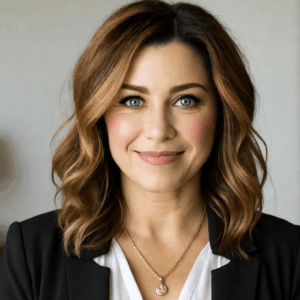Written by Dr. Emily R. Thornton, PhD, LCADC , Last Updated: November 13, 2025
The 12 core functions of substance abuse counseling are professional duties that guide counselors through every stage of client treatment. They include: screening, intake, orientation, assessment, treatment planning, counseling, case management, crisis intervention, client education, referral, recordkeeping, and consultation. These evidence-based functions form the foundation of addiction counseling practice and certification requirements across most states.
Table of Contents
- An Overview of the 12 Core Functions and Global Criteria
- Function 1: Screening
- Function 2: Intake
- Function 3: Orientation
- Function 4: Assessment
- Function 5: Treatment Planning
- Function 6: Counseling
- Function 7: Case Management
- Function 8: Crisis Intervention
- Function 9: Client Education
- Function 10: Referral
- Function 11: Recordkeeping
- Function 12: Consultation With Other Professionals
- Frequently Asked Questions

On the road to becoming a substance abuse counselor, you’ll likely study, practice, and one day become an expert in the 12 core functions of addiction counseling. Generally speaking, the 12 core functions are a set of duties you’ll perform to help people through every stage of recovery from admission to discharge and beyond.
The 12 core functions aren’t just a list to memorize or a set of motions to go through. They’re a symbol of how far addiction counseling has come. They’re an evidence-based framework you can use to help people in one-on-one counseling sessions, community education events, and any recovery-focused setting.
In essence, the 12 core functions define what it means to be an addiction counselor today. In this guide, we’ll explore each one in detail and talk about different ways you can approach them as you guide your clients through recovery.
An Overview of the 12 Core Functions and Global Criteria
The 12 core functions are a set of duties that outline just about every aspect of a substance use disorder counselor’s job. If you pursue a substance use disorder (SUD) counseling degree or certification, you’ll likely be trained and tested on them by your school or credentialing agency. When it comes time to start your new job, your employer will likely use them to define your duties.
The 12 core functions of substance abuse counseling are:
- Screening
- Intake
- Orientation
- Assessment
- Treatment Planning
- Counseling
- Case Management
- Crisis Intervention
- Client Education
- Referral
- Report and Recordkeeping
- Consultation with Other Professionals
Each of these functions is composed of several smaller, more specific skills, collectively referred to as global criteria. To master each function, you’ll have to master each global criterion first. We’ll cover each function’s global criteria in later sections.
Variations in the 12 Core Functions of the Substance Abuse Counselor

There’s no uniform process for becoming a counselor in the US. Each state has the authority to set its own standards. Some have stricter requirements than others. These variations also mean that not every state or organization uses the 12 core functions.
For example, the International Certification and Reciprocity Consortium (IC&RC) is one of the country’s leading agencies for counselor certification. Many states use IC&RC guidelines to inform their credentialing processes. The IC&RC builds its tests and training processes around the 12 core functions.
There’s another major counselor certification agency in America that also informs state regulations: the National Association for Alcoholism and Drug Abuse Counselors (NAADAC). NAADAC structures its training and certification around nine skill domains that align closely with the 12 core functions, although the terminology and categorization differ:
- Treatment admissions, including screening, intake, and orientation.
- Clinical assessment.
- Treatment planning.
- Counseling, including individual, group, and family counseling, crisis intervention, and client education.
- Documentation.
- Case management.
- Continuing care and discharge planning.
- Legal, ethical, and professional development issues.
- Physiology and psychopharmacology.
You’ll notice that these skill areas are highly similar to the 12 functions. So while agencies in your state might not use the term “12 core functions,” they likely use a similar concept. As you explore degree programs and investigate regulations in your state, it’s essential to keep these details in mind.
IC&RC vs NAADAC: Framework Comparison
| IC&RC (12 Core Functions) | NAADAC (9 Skill Areas) |
|---|---|
| Screening, Intake, Orientation (separate functions) | Treatment Admissions (combined) |
| Assessment | Clinical Assessment |
| Treatment Planning | Treatment Planning |
| Counseling, Client Education, Crisis Intervention (separate) | Counseling (combined) |
| Recordkeeping | Documentation |
| Case Management | Case Management |
| Not separately specified | Continuing Care and Discharge Planning |
| Integrated throughout functions | Legal, Ethical, and Professional Development |
| Integrated throughout functions | Physiology and Psychopharmacology |
Who Created the 12 Core Functions?
The 12 core functions as they’re used today weren’t created by one person at a single point in time. Instead, they were developed and refined over the years by numerous organizations and SUD treatment professionals.
According to industry experts, the 12 core functions were first introduced in 1980 by a group of state-level agencies. This was done by agencies in different states that were trying to make substance use disorder treatment a more consistent, clinically-focused field. The global criteria were introduced in 1993 to support the training process and clarify counselors’ specific duties.
Why Were the 12 Core Functions Created?
The 12 core functions were first introduced in 1980 by a group of state-level agencies, preceding the American Medical Association’s recognition of addiction as a disease in the early 1980s. The AMA’s recognition was one of the most critical developments in the history of SUD counseling in the US. It signaled that addiction should be treated like other diseases: clinically, professionally, and without stigma.

But even though the days of dubious elixirs, lobotomies, and dehumanizing treatment techniques were essentially over, there was still a large vacuum in the recovery community.
While substance use disorder counselors existed, there weren’t many agreed-upon training programs for new counselors. Many of the individuals who entered the field were psychologists, medical doctors, social workers, and other professionals. Suppose you wanted to become a substance use disorder counselor. In that case, you’d likely have to enter the field indirectly through one of those professions and seek training through an organization like the IC&RC or NAADAC.
However, with the establishment of the 12 core functions, a straightforward path was finally established. New counselors had concrete skills to learn. Their trainers and educators had a framework for preparing them for their new careers. Government agencies could now regulate the profession, just as they had done with doctors and nurses. People could find professionals who were specifically trained to help them.
Since then, schools across the country at every level have begun offering degree programs for students who wish to enter this life-saving field. There’s still work to be done, but the 12 core functions of a substance abuse counselor provide a blueprint for future advancements.
Function 1: Screening
Global Criteria
- Evaluate clients for the social, psychological, and physiological signs of substance use disorders.
- Determine if clients should be admitted or referred to other programs.
- Determine if clients are eligible for admission.
- Screen for co-occurring disorders and decide if clients need further assessment or support.
- Comply with all applicable laws and regulations governing SUD treatment services.
Screening is the process by which a counselor determines whether a person needs treatment and what level of treatment will be most beneficial for them. If you work for a provider that offers various forms of treatment, such as inpatient, outpatient, and partial hospitalization, it’s essential to have a meticulous screening process in place.
Determining Client Needs
While some treatment providers may have their own screening processes, there are several widely used screening tools. Some organizations use different combinations of these tools to screen potential clients and patients:
- The Tobacco, Alcohol, Prescription medication, and other Substance use (TAPS) Tool – a screening tool that focuses on frequency of use.
- Brief Screener for Tobacco, Alcohol, and Other Drugs (BSTAD) – another frequency-focused tool, but tailored to adolescents.
- The Brief Addiction Monitor (BAM) – a 17-question form that asks about use, how use has affected a client’s health and sleep, and their existing support system.
Screening tools are often brief, but that’s fully intended. Screening is all about determining if further assessment is required. You’ll learn more about your client’s needs as you complete the remaining 12 core functions.
Determining If a Program Can Meet a Client’s Needs
During screening, determining what kind of help a client needs is only half the battle. The other half is determining if you and your team are equipped to meet your client’s needs.
To answer that question, you may have to consider:
- Any co-occurring disorders your potential client is facing. Co-occurring disorders are mental, physical, and psychological issues related to a substance use disorder.
- Cultural and language differences. While recovery communities strive to be inclusive, being able to connect with clients on a basic cultural level is vital to treatment. If that might pose an issue, you may need to refer clients to other providers. This should be an informed, compassionate decision that considers your client’s input.
- Financial eligibility. Because SUD treatment isn’t always covered by insurance, costs can sometimes limit where a person can seek help. Counselors and their office personnel must often explore financial options on behalf of their clients and assist them in finding accessible treatment if necessary.
Some of these circumstances can be discovered through simple questionnaires. You may also need to consult with other specialists, review medical histories, and conduct client interviews to determine your role in their journeys.
Co-Occurring Disorders: One of the Most Important Factors To Consider During Screening, Treatment, and Beyond

Co-occurring disorders can take many forms. For example, many people suffering from depression, anxiety, and other mental health disorders self-medicate using non-prescribed drugs and alcohol. Some mental health disorders are made worse by using alcohol and other drugs. Similarly, substance use disorders can lead to chronic health problems such as cirrhosis of the liver or HIV.
According to the Substance Abuse and Mental Health Services Administration (SAMHSA), co-occurring disorders are pervasive. SAMHSA reports that over 21 million people with SUDs have a co-occurring disorder.
Treating a substance use disorder often means treating these conditions as well. During screening, you may need to determine if your clinic has the necessary resources to do so. If not, you may have to refer the client to another provider or a specialist who can help you and your client throughout the process.
Function 2: Intake
Global Criteria
- Fill out all admission paperwork.
- Fill out all documents related to clients’ eligibility and appropriateness for the program.
- Obtain consent forms from clients as needed for referrals and consultations.
Once you’ve screened a client and determined that they may benefit from your program’s services, it’s time to prepare them for admission through a process called intake. As the global criteria imply, intake is essentially an administrative process that requires a lot of paperwork.
During intake, you might have your client fill out:
- Basic personal information forms.
- Information release and HIPAA forms.
- Evaluation forms that dive deeper into their reasons for seeking admission.
- Prescription, treatment, family, and medical history forms (including any official diagnoses).
But like screening, intake isn’t always about collecting information from the client. You may also want to provide them with information about your program’s values, the techniques you use, and your own qualifications. For clients, the intake process can be intimidating. Allowing them to get to know you and your organization can help alleviate the anxiety surrounding treatment.
Function 3: Orientation
Global Criteria
- Communicate your program’s goals to clients.
- Inform clients about the rules and rights associated with your programs.
- Describe your program to clients in detail.
After you’ve processed all required paperwork, you or another member of staff will conduct an orientation. While you may have already discussed what your services involve during intake, orientation is when you go into more detail. You may even have clients sign paperwork acknowledging they’ve read and understand your program’s policies.
The global criteria for orientation do a great job explaining what you’ll do at this time. It’s important to remember that clients will likely have their own questions. Answering them clearly and compassionately can help them feel more comfortable with the idea of treatment. That can be a powerful thing in the early days of recovery.
Functions 1-3 Summary: The first three functions (screening, intake, and orientation) form the foundation of the client-counselor relationship. They establish eligibility, gather essential information, and set clear expectations for treatment. These administrative functions are just as critical as clinical interventions because they ensure proper placement and informed consent.
Function 4: Assessment
Global Criteria
- Gather client history using appropriate interview methods. This can include family, treatment, and substance use history.
- Obtain information about history from other sources (doctors, psychologists, etc.) when necessary.
- Identify appropriate assessment tools.
- Explain the assessment process to clients.
- Conduct a comprehensive assessment of your clients’ needs, taking into account their strengths, struggles, and any co-occurring disorders.
After reading the global criteria for assessment, it may seem like a repetition of the screening and intake process. Assessment is a more involved process and typically involves interviewing clients face-to-face, rather than administering questionnaires. This allows you to truly understand their struggles and goals, and tailor your approach to meet their needs.
While some of the global criteria are pretty self-explanatory, understanding interview and assessment techniques is key to understanding your role as both a counselor and a source of support.
Interview Techniques

In the SUD counseling world, effective interview techniques are methods of communication that promote clear communication and trust between clients and counselors. The interview techniques you’ll learn about during training have all likely been tested and reviewed repeatedly.
There are many types of interview techniques, but some of the most widely used ones include:
- Reflective Listening – This involves a counselor repeating back to a client what they have said or summarizing the issue the client is describing. Reflection can encourage clients to think more deeply about their thoughts and feelings. It can also help counselors make sure they understand their clients.
- Asking open-ended questions – Open-ended questions invite clients to give insightful answers in their own words. For example, “How do you think being sober will help?” is an open-ended question while “Do you want to quit drinking?” is a simple yes-no question that may not elicit helpful responses.
- Affirmations – Offering genuine compliments to a client can help them recognize their strengths and feel encouraged about treatment.
- Summarizing is similar to reflective listening in that it typically involves a counselor restating what a client has said. Summarizing also consists of highlighting key points that a client may have made without realizing it. This is especially useful in helping clients identify their goals and reasons for seeking treatment.
These techniques all belong to a counseling strategy called motivational interviewing. Motivational interviewing helps counselors and clients discover and work towards specific goals. Just as importantly, it allows clients to play an active part in their own recovery. This collaborative approach to counseling can break down barriers between you and your clients. It’s a signal that you’re not there to judge. You’re there to help.
Assessment Tools
Like interview techniques, SUD counselors employ a wide range of assessment tools and may use combinations of them to gain a clear picture of their clients’ needs. Assessments follow-up is administered in the form of questionnaires, interviews, or a combination of both. Ultimately, clients typically receive a score that indicates the level of care they may require.
Some popular assessment tools include:
- TAPS-2 – a follow-up to the TAPS screening tool that focuses on how often clients use intoxicants, why, and their efforts to stop or cut back.
- The Michigan Alcohol Screening Test (MAST) – a widely-used 25-question assessment that asks questions about potential physical, social, and mental symptoms of alcohol use.
- Substance Abuse Subtle Screening Inventory, 3rd Edition (SASSI-3) – a 93-item questionnaire that assesses how much a client may be trying to conceal the effects of an SUD from people in their everyday lives.
| Assessment Tool | Format | Primary Focus | Best Used For |
|---|---|---|---|
| TAPS-2 | Interview/Questionnaire | Frequency and efforts to reduce use | Follow-up after positive screening |
| MAST | 25-question form | Alcohol-related symptoms and consequences | Alcohol use disorder assessment |
| SASSI-3 | 93-item questionnaire | Hidden symptoms and denial | Clients who may minimize use |
When assessing a client in the next step, it’s essential to be transparent about the goals of each assessment tool and discuss the results in non-stigmatized terms. Coming to you for help was likely a tough decision.
Function 5: Treatment Planning
Global Criteria
- Discuss assessment results clearly with your clients.
- Prioritize issues, including SUDs and co-occurring disorders. Develop long-term goals with your client. Focus on actionable behavior-focused goals.
- Determine which level of treatment and what methods you’ll use. Also include any outside resources you plan to use in the treatment plan.
At this point in the treatment process, you should have gathered all the necessary information about your client and their needs. During the treatment planning stage, you’ll combine that information with your counseling knowledge and plot out the course of their recovery in detail and in writing.
While you may need to remain adaptable and react to your client’s changing needs, your treatment plan will serve as your guide throughout the entire process.
Once again, communication with your client is of the utmost importance. They and their loved ones are vulnerable. If they’ve gone through treatment before and had bad experiences, they might even be resistant. Being as clear as possible about your treatment plan, even if it has to change later, is a crucial step in building trust.
Functions 4-5 Summary: Assessment and treatment planning transform information into action. Through careful evaluation and collaborative goal-setting, you create a roadmap for recovery that addresses each client’s unique circumstances, strengths, and challenges.
Function 6: Counseling
Global Criteria
- Identify which counseling theories and techniques you’ll use.
- Utilize these techniques in individual, group, and family counseling to address relevant issues.
- Use those techniques to examine and discuss clients’ feelings when appropriate.
- Take personal factors into account. This can include their gender identity, lifestyle, and cultural background.
- Maintain an appropriate therapeutic relationship with clients.
- Use counseling to help clients develop their own solutions and serve as a guide throughout the process.
- Implement your treatment plan.
Once you’ve assessed a client and made a treatment plan, it’s time to put that information to work as you carry out the sixth function: counseling. Once again, the global criteria do a good job of summarizing what this function entails.
There’s a vast array of counseling theories and techniques available. While you’ll likely study and practice them during your master’s degree program or training, a brief introduction to a few essential counseling theories can help you understand what the counseling process is actually like. Throughout counseling, you might decide that a client responds to one type of therapy best or that you should combine different elements of each type.
Cognitive Behavioral Therapy (CBT)
CBT focuses on helping people change negative behaviors by first changing the negative thought process behind them. Over time, you can help clients overcome negative thought processes by introducing new ones and assisting them in developing effective coping mechanisms. CBT is one of the most widely used techniques in both SUD and mental health counseling.
Gestalt Therapy
Gestalt Therapy is an active, holistic type of therapy that focuses on self-awareness and being present in the moment. Like CBT, this can help people recognize and change the negative thought patterns that often come into play with substance use disorders. Counselors typically combine Gestalt Therapy with roleplaying and artistic exercises to help individuals explore their emotions.
Rational Emotive Behavior Therapy (REBT)
In REBT, counselors help clients slow down their thought processes and determine if thoughts and actions are rational. For example, if you have a client who is overwhelmed by their work or personal responsibilities, they may feel like they’ll fail no matter what they do.
This thought might fuel an SUD. It might be rooted more in anxiety than in the reality of their situation. Through REBT, you may be able to help the client restructure their thinking and base decisions on what’s directly in front of them.
| Therapy Approach | Primary Focus | Key Technique | Best For |
|---|---|---|---|
| Cognitive Behavioral Therapy (CBT) | Changing thought patterns | Identifying and restructuring negative thoughts | Clients with specific behavioral goals |
| Gestalt Therapy | Present-moment awareness | Roleplaying and artistic expression | Clients needing emotional exploration |
| Rational Emotive Behavior Therapy (REBT) | Rational vs irrational thinking | Challenging irrational beliefs | Clients with anxiety-driven use |
Function 7: Case Management
Global Criteria
- Coordinate outside services for clients as needed.
- Explain why you’re recommending each service.
As you help a client through recovery, you may find that they require more than counseling to achieve success during treatment. They may need job counseling, affordable and safe housing, a support group, or a variety of other services. The act of bringing these services together is called case management.

As you gather resources for clients, you’ll have to be resourceful, creative, and, at times, persistent. To ensure you’re providing relevant resources, you’ll also need to discuss them with your clients and ask them about their progress. In that sense, you’re not just an SUD counselor—you’re an advocate for vulnerable people in your community.
Function 8: Crisis Intervention
Global Criteria
- Determine if a client is going through a crisis.
- Take immediate action when necessary.
- Integrate crisis moments into counseling when they occur.
As a counselor, your primary goal is to empower individuals to make lasting, healthy changes. However, in some cases, you may need to take immediate steps to ensure your clients’ safety. This is called crisis intervention. While you may have had to confront a crisis during screening or intake, crisis intervention may be necessary at any stage of the counseling process.
Examples of crises you may encounter as a substance abuse counselor include:
- Mental health crises.
- The risk of suicide or self-harm.
- Domestic violence.
- Medical emergencies caused by long-term chronic health issues, withdrawals, or overdose.
Depending on the circumstances, you may need to refer your client to an inpatient facility, shelter, or hospital. You may even need to contact emergency services. But before, during, and after, you can also be a source of emotional support. In fact, the crises you help your clients navigate could very well be stepping stones towards their recovery.
Function 9: Client Education
Global Criteria
- Educate clients about SUDs and treatment in relevant, relatable ways.
- Educate clients about other educational resources they can utilize.
Aside from counseling, you’ll also play a pivotal role in educating your clients about substance use disorders and the treatment process itself. This can be done by recommending books, sharing your knowledge during sessions, or referring them to other educational resources.
For many people, learning the science behind what they’re going through can be a powerful way to overcome the self-loathing, stigma, and hopelessness that often accompany substance use disorders. Depending on where your career takes you, you may also have the opportunity to speak to support groups, schools, and at community events.
Functions 6-9 Summary: Counseling, case management, crisis intervention, and client education represent the active treatment phase where you apply clinical skills, coordinate resources, respond to emergencies, and empower clients through knowledge. These functions often overlap and work together to support client success.
Function 10: Referral
Global Criteria
- Identify the issues that your agency is not equipped to handle.
- Explain to clients why you’re making a referral.
- Find relevant resources for your clients.
- Observe all information privacy laws when making referrals.
- Help clients access and use the resources you refer them to.
At some point in your career, you’ll likely have clients who need more support than what you or your team can provide. As a counselor, you might not be trained to provide medication-assisted treatment, mental health diagnoses, or other advanced interventions. In those cases, you’ll need to refer clients to specialists who do. This is called referral.
For example, during a client’s initial screening, you may have discovered that they exhibit some signs of bipolar disorder. In that case, you might refer them to a psychiatrist, a mental health professional who can diagnose the issue, provide treatment, and prescribe medication.
It’s essential to discuss referrals with clients and assist them in finding accessible treatment. As a member of your local recovery network, you’re in the perfect position to do just that. Later in your career, you may even pursue a master’s degree, obtain a clinical counseling license, and diagnose mental health issues and other complex problems independently.
Function 11: Recordkeeping
Global Criteria
- Keep reports and records that help you and others support clients throughout all stages of treatment.
- Record new information for integration into the treatment plan.
- Utilize all relevant documentation throughout treatment.
While recordkeeping might not be the most exciting of the 12 core functions of addiction counseling, it’s essential to carrying out the other 11. Without detailed recordkeeping, tracking client progress, referring them to other professionals, and determining the next step would be nearly impossible.
But recordkeeping isn’t just a practical concern. It’s also a legal and ethical one. Like medical records, SUD treatment records are protected by federal laws, specifically Title 42, Part 2 of the Code of Federal Regulations (often abbreviated as 42 CFR Part 2).
Among other things, 42 CFR Part 2 requires SUD professionals to obtain clients’ written consent before sharing their records in any way. This protects people from being unfairly judged or stigmatized by employers, law enforcement, or others. Attitudes about SUDs have come a long way in recent decades. There’s still room for improvement. Maintaining integrity when it comes to client records is an extension of your duty to help and protect vulnerable people.
Function 12: Consultation With Other Professionals
Global Criteria
- Recognize skills and areas that are outside of your skill set.
- Find the right sources of information and consult with them as needed.
- Observe information privacy laws throughout the consultation.
- When needed, explain why you’re consulting other professionals with your clients.
Consultation is similar to referral in that it involves you asking other professionals for help. But during consultation, you aren’t sending your client elsewhere for services. You’re simply getting input from other professionals.

For example, imagine you have a client who’s going through marital issues. They may even be facing a divorce or custody battle. While you feel equipped to help them on an emotional level, you’re not familiar with all the legal issues surrounding divorce and child custody. There’s another counselor in your practice who is. You might turn to this person when you need help planning your client’s treatment or preparing for the challenges they’ll face.
When you consult with other professionals (even those in your own practice), you must still abide by all privacy regulations. In some cases, you may even have to get the client’s consent before seeking consultation.
Functions 10-12 Summary: Referral, recordkeeping, and consultation ensure you work within your scope of practice while connecting clients to comprehensive care. These functions emphasize collaboration, documentation, and ethical practice as essential elements of professional counseling.
Frequently Asked Questions
What are the 12 core functions of substance abuse counseling?
The 12 core functions are screening, intake, orientation, assessment, treatment planning, counseling, case management, crisis intervention, client education, referral, recordkeeping, and consultation with other professionals. These functions define the scope of practice for substance abuse counselors and form the basis for certification exams.
Do all states use the 12 core functions?
Not all states use the 12 core functions framework exactly. While most states that follow IC&RC guidelines use the 12 core functions, states following NAADAC standards use a similar nine skill areas model. Both frameworks cover essentially the same competencies but organize them differently.
What’s the difference between screening and assessment?
Screening is a brief initial evaluation used to determine if someone requires treatment and what level of care might be suitable. Assessment is a more comprehensive and in-depth evaluation that involves face-to-face interviews and the use of detailed tools to understand the client’s specific needs, strengths, and challenges. Screening asks “Do they need help?” while assessment asks “What kind of help do they need?”
What are the global criteria in addiction counseling?
Global criteria comprise the specific skills and tasks that contain each of the 12 core functions. They break down each function into concrete, measurable competencies that counselors must demonstrate. For example, the screening function includes global criteria, such as evaluating clients for signs of SUDs and determining program eligibility.
How do the 12 core functions relate to certification exams?
The 12 core functions form the foundation for IC&RC certification exams. Test questions are designed to assess your knowledge and application of each function. Many states require passing an IC&RC exam that covers these functions to obtain counselor certification or licensure.
Can I work as a substance abuse counselor without knowing all 12 functions?
While entry-level positions, such as peer support specialists, may not require mastery of all functions, most professional counselor positions expect competency across all 12 areas. Certification and licensure requirements typically test knowledge of all functions. The functions represent the complete scope of professional practice in substance abuse counseling.
Key Takeaways
- The 12 core functions provide a comprehensive framework defining substance abuse counselor duties from client admission through discharge and beyond.
- While IC&RC uses the 12 core functions, NAADAC organizes similar competencies into nine skill areas – both frameworks cover essentially the same professional responsibilities.
- The first three functions (screening, intake, and orientation) establish the foundation through eligibility determination, information gathering, and setting expectations.
- Assessment and treatment planning transform collected information into actionable recovery roadmaps tailored to each client’s unique circumstances.
- Active treatment functions (counseling, case management, crisis intervention, client education) apply clinical skills and coordinate comprehensive support services.
- Referral, recordkeeping, and consultation ensure ethical practice, proper documentation, and collaboration within your scope of practice.
- Co-occurring disorders affect over 21 million people with SUDs and must be considered throughout all 12 functions for effective treatment.
- Understanding the 12 core functions is essential for certification exams and forms the basis for professional credentialing in most states.
Ready to Start Your Substance Abuse Counseling Career?
Understanding the 12 core functions is just the beginning. Explore degree programs, certification requirements, and career pathways to turn your passion for helping others into a rewarding profession.





